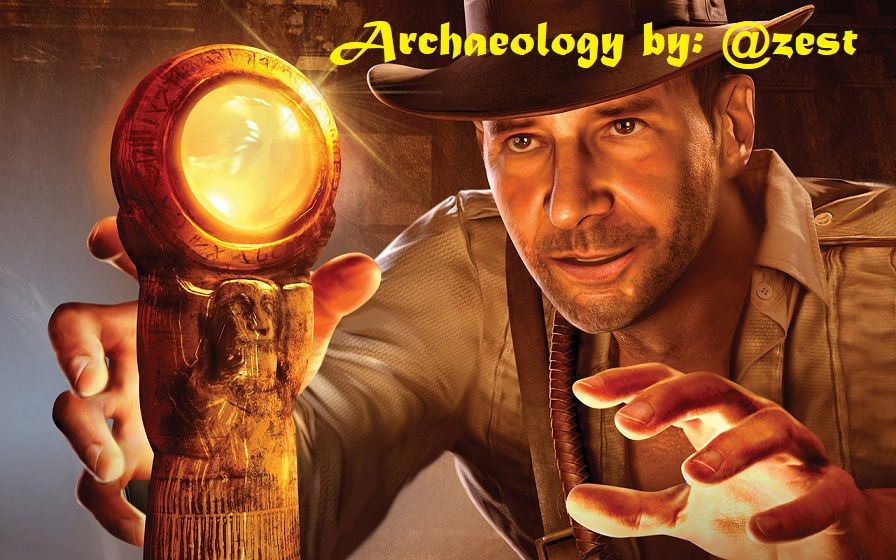The Later Stone Age in South Africa: Introduction

The Later Stone Age in South Africa: Introduction
| Cultural Period | Date | Geological Epoch | European Contemporary |
|---|---|---|---|
| LSA | Approx 25 000-100 years ago | Late Pleistocene - | Palaeolithic |
| Holocene | Mesolithic |
The Later Stone Age (LSA) refers to those human beings who lived in South Africa from approximately 30 000 years ago until about 100 years ago. Our discussion of the LSA will include reference to the climatic and environmental conditions under which LSA people lived, the technology which they developed, their lifestyles, subsistence strategies and art. You will see that we have far more information about the lifestyles and technological development of the LSA people than we have about Early Stone Age (ESA) and Middle Stone Age (MSA) people.
It is now accepted that the LSA is part of Prehistory of the historically known Bushmen (San) and of the Khoekhoen. The word Khoisan is a collective term for hunter-gatherers and herders and is generally used to designate these two groups. Note that this term was never used by the people themselves (Deacon & Deacon 1999:129-130) Archaeologists use historical and ethnographic data about these groups to interpret the archaeological remains of the LSA. This is because it is at about this time that the distinctive characteristics of these people (revealed in ethnographic studies) first appear in the LSA archaeological record.
The dating of the transitional period between the MSA and the early Later Stone Age has not yet been resolved. The change from the MSA to the LSA occurred in mosts parts of southern Africa more than 20 000 years ago. At a few sites in South Africa, late dates have been obtained for MSA assemblages and certain evidence suggests that MSA technology was still being used at some sites (eg Strathalan in the eastern Cape, Rose Cottage Cave in the Free State, Driekoppen in Seacow Valley, Sehonghong in Lesotho, etc) until 26 000 to 20 000 Before Present (BP) (Wadley 1993:263).
Relatively long phases of non-occupation between the MSA and LSA seem to have been the norm for most cave sites and rock shelters with long occupational deposits and reliable stratigraphic records. Sometimes there appears to be hiatus of a few thousand years between the final stages of the MSA and the first visible elements of the LSA. However, at some sites (eg Cave James and Jubilee Shelter in Gauteng) there is neither an occupational hiatus nor a geological division between the MSA and LSA.
Stone tools are the most abundant and visible archaeological artefacts found. The division of the last part of the South African Stone Age into MSA and LSA is, to a large extent, based on the different stone tool technology used during these two periods. The LSA is therefore regarded as a technological unit displaying, at any particular time, similar characteristics; LSA technology is dominated by a stone-flaking technique for the manufacture of a formal range of artefacts. Evidence indicates that LSA people changed their technology constantly in order to adapt to changing environments and other variables.
Recent research has moved away from the narrowly focussed typological studies of the past, and now tries to intergrate the palaeoenvironmental data with lithic materials studies. The terminology which was first used for the LSA originated at a time when absolute dating techniques were still being developed. We now know far more about the nature of the LSA; advancements in the techniques used by researchers to interpret archaeological finds have made it necessary to give names to the informal divisions created by stone tool typology and technology. These divisions will be discussed in detail in this series of posts.
Archaeological research indicates that the history of hunter-gatherers, and subsequently that of the herders during the LSA, is marked by the following major changes
(Deacon & Deacon 1999:12)
- Artwork is suddenly much more sophisticated and much more widespread. LSA artwork reflects the expression of complex belief systems.
- Specialised LSA technology is increasingly evident.
- Population density gradually increases, particularly during the last 4000 years.
- A herding economy was introduced by Khoe speakers about 2000 years ago.
- There is evidence for trade and interaction with metal-working African farmers of the Early Iron Age from about 2000 years ago onwards
- European colonisation resulted in the loss of land and control of resources.
In the next Posts we will cover the Historical background and advances in LSA Research
Images are link to their sources in their description and references are stated within the text.
Thank you for reading
Thank you @foundation for this amazing SteemSTEM gif



These humans Bushman still exist and live in our country South Africa..
in the mountains,forrest without techonology
This is indeed true, I admire there simplistic lifestyle when a technological world is at their doorstep. In my opinion, I think they have a better way of living than all of us, the world is a purer place for them. But what wonderful people! always welcoming of strangers and will give you as much as they can which is something you don't see in a modern society. So what does that say about us?
Amazing post friend. Thanks for sharing.
Thank you so much @nafazul
I am very interested in your post .. I admit your post is very unusual for me
Hi @imamalkimas. I am really glad you found the post interesting:)
This is very interesting!
Thank you @gailbelga
Youre welcome.
thank you very much for share information.
Upvoted and followed
I love Geology and Space Science
@zest would appreciate an upvote from you on this post
https://steemit.com/science/@mickyscofield/how-to-catch-a-criminal-using-geospatial-techniques
southafrica is the most beautiful country all over the world..i like this country very much..follw me...
Welcome back to the stone age, thank you for making a re-examination of the progress that previous generations of human beings have made, the fact is that now and for the future we can not escape from dependence on stone, for stone is a part of our lives.
Thank you for posting this important, useful article.
Upvoted and also resteemed :)
Congratulations @zest, this post is the sixth most rewarded post (based on pending payouts) in the last 12 hours written by a User account holder (accounts that hold between 0.1 and 1.0 Mega Vests). The total number of posts by User account holders during this period was 1258 and the total pending payments to posts in this category was $2131.38. To see the full list of highest paid posts across all accounts categories, click here.
If you do not wish to receive these messages in future, please reply stop to this comment.